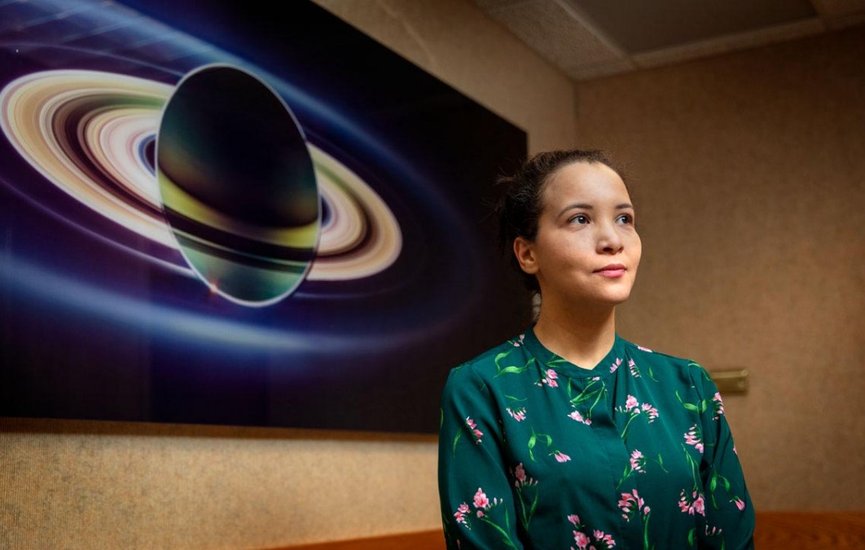A Moroccan scientist has led a groundbreaking discovery, adding a 29th moon to Uranus.
Maryame Al Moutamid, a researcher at the Southwest Research Institute (SwRI), led the team that identified the new celestial body using NASA’s James Webb Space Telescope.
The discovery was made on February 2, 2025, after capturing ten images with the telescope’s Near Infrared Camera (NIRCam), each taking about 40 minutes to complete.
“Even though this moon is small, its discovery represents a major achievement,” said Al Moutamid, who serves as the principal researcher in the Solar System Sciences and Exploration Division at the institute’s Boulder, Colorado location. “This object escaped detection even when Voyager 2 flew past Uranus nearly forty years ago.”
The newly discovered moon measures only about 10 kilometers in diameter, which explains why it had been missed by earlier spacecraft and telescopes. Its tiny size made it invisible to previous observation missions.
Scientists have classified this moon as part of Uranus’s small, intricate inner moon system, bringing the total count of these moons to 14. These moons orbit alongside the planet’s rings, revealing a complex dynamic that blends characteristics of both moons and rings.
The moon orbits 56,000 kilometers from Uranus' center in a nearly circular orbit, positioned between two moons, Ophelia and Bianca. Scientists believe it has remained in its current orbit since its formation, rather than migrating there later.
The International Astronomical Union (IAU), responsible for naming celestial bodies, will officially name the moon after its approval.
This discovery highlights the advanced capabilities of the James Webb Space Telescope in detecting small objects in the solar system, shedding new light on planets previously thought to be well understood.
The find expands our knowledge of Uranus, one of the most enigmatic planets in the solar system, which continues to intrigue researchers with its complex moon and ring systems.
Al Moutamid’s leadership in this discovery underscores the valuable contributions of Moroccan women in the field of space research, emphasizing the significance of global expertise in modern astronomical advancements.
